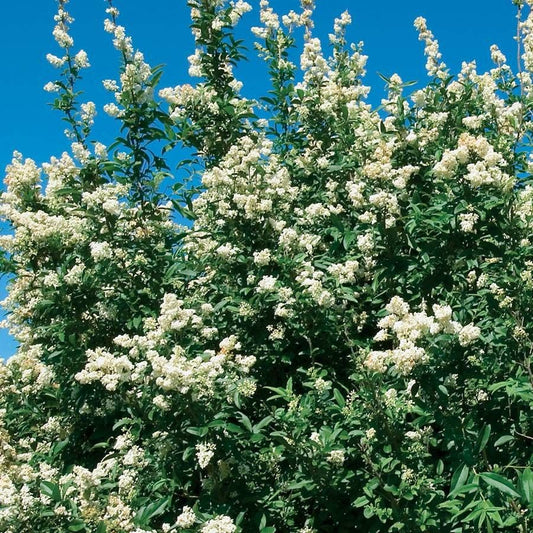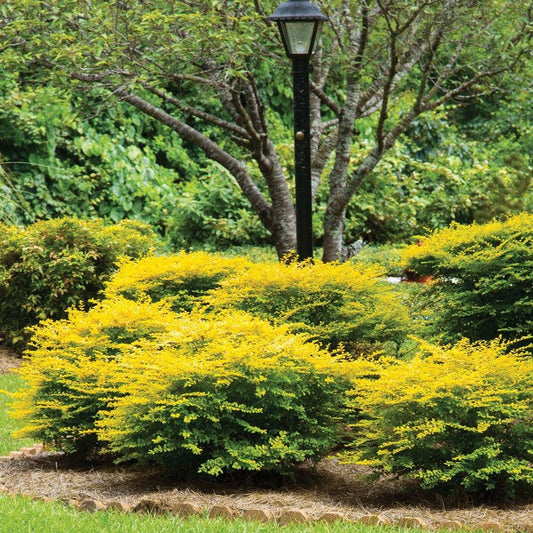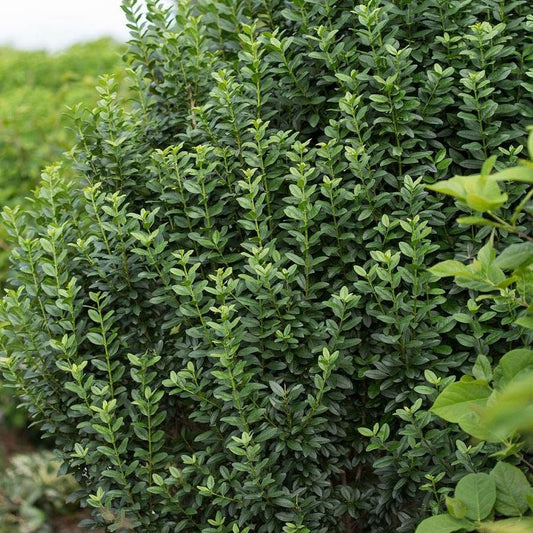Ligustrum / Privet
-
Ligustrum 'Cheyenne Privet'
Regular price $26.95Regular priceUnit price per -
Ligustrum 'Sunshine' Privet
Regular price $37.95Regular priceUnit price per -
Ligustrum Golden Vicary Privet
Regular price $34.95Regular priceUnit price per -
Ligustrum Straight Talk® Privet
Regular price $39.95Regular priceUnit price per
Ligustrum / Privet
Excels as formal hedging and topiary
The Ligustrum genus contains ornamental flowering evergreen and deciduous shrubs and small, bushy trees, commonly called privets, grown for their attractive foliage and abundant clusters of tiny, fragrant white flowers that bloom in late spring or early summer; however, flowerless, allergen-free cultivars are now available. Privets have a delicate appearance with their slender, smooth-barked twigs densely covered in small oval- to lance-shaped glossy green leaves, though leaf shades vary. Flowering varieties sustain bees and butterflies and the bounty of blue-black berrylike drupes that follow are a food source for songbirds.
Ligustrum is a genus of about 50 species. Most grow vigorously and have an erect or mounding, rounded, spreading habit. Some species can reach up to 39 feet tall, but modern cultivars are typically bred to stay in the 4- to 15-foot-tall and 4- to 10-foot-wide range; however, privets respond well to pruning for size and shape and can be clipped into formal shapes or ornamental topiary art, but they are commonly planted as container specimens, vertical accents, hedges, and screens. Species of horticultural importance include Ligustrum japonicum (Japanese privet; wax leaf privet), Ligustrum ovalifolium (California privet), Ligustrum sinense (Chinese privet), and Ligustrum vulgare (European privet; common privet).
Easy-care plants, privets grow best in sunny to partly shady locations with average, well-draining soil having a slightly acidic to slightly alkaline pH. They are highly adaptable to a wide range of growing conditions but typically do not tolerate dry soils. Privets are pest, pollution, disease, and deer resistant. Light pruning throughout summer encourages denser, bushier growth, but heavy pruning for size should only be done immediately after flowering. Privets are toxic to people and pets and can be invasive in certain regions.





